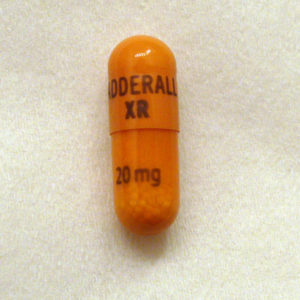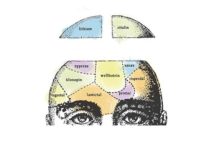The abuse of ADHD drugs on college campuses has reached epidemic proportions, according to the authors of a recent review in the Journal of Ethical Human Psychology and Psychiatry. ADHD drugs, like Ritalin and Adderall, have become so commonplace on college campuses that students who abuse these drugs for studying, weight loss and partying are underestimating their risks. As a result, we have seen exponential increases in emergency room visits, overdoses, and suicides by students taking these drugs.
 In their featured article, Dr. Gretchen Watson, Dr. Andrea Arcona, and Dr. David Antouccio, convincingly lay out the nature of the ADHD drug abuse epidemic, the history of the ADHD debate, and suggestions for institutional reform.
In their featured article, Dr. Gretchen Watson, Dr. Andrea Arcona, and Dr. David Antouccio, convincingly lay out the nature of the ADHD drug abuse epidemic, the history of the ADHD debate, and suggestions for institutional reform.
In 1999, a large-scale epidemiological study found that ADHD diagnoses and drug prescriptions were occurring at a rate three times higher than the estimates of the disorder, but, the authors claim, this line of research was effectively shut down by those with interests in the pharmaceutical industry. Rates of ADHD drug prescriptions continued to rise and in 2013 a front-page New York Times story about medical student Richard Fee reignited the debate. Fee had quickly obtained an ADHD diagnosis and accompanying prescription to help cram for tests while an undergraduate student. He became addicted to the drugs and had the prescription filled by multiple physicians, each failing to validate his diagnosis or council him on the drugs’ risks. The stimulant addiction set off a downward spiral that ended in suicide.
The story garnered national attention and prompted further reports on the use of prescription stimulant drugs on campuses. Several prominent physicians and psychiatrists spoke out against the over-prescription of these drugs. For example, renowned ADHD treatment expert Dr. C. Keith Conners called the rates of ADHD prescriptions “a national disaster of dangerous proportions” in 2013. Despite this outcry, the authors point to recent research suggesting that “many high school and college students report fearing that they cannot keep up with their peers unless they take ADHD drugs.”
According to the authors, “popular ADHD drugs such as Adderall, Concerta, Focalin, Vyvanse, and Ritalin have a high addictive potential,” and the FDA requires amphetamines to include a black box warning about the possibility of dependence and sudden death.
The study authors list the following side-effects for ADHD drugs:
- nervousness,
- anxiety,
- sleep disturbances,
- growth suppression; appetite suppression, nausea, vomiting, and weight loss;
- dizziness and headaches;
- changes in heart rate, blood pressure, skin rashes, and toxic psychosis.
In addition, if taken at a high dose, “stimulant medication can result in paranoia, delusions, and hallucinations and circulatory and pulmonary problems—sometimes leading to accidental death and suicide.” “Of greater concern,” the authors add, “there is evidence to suggest that the medications used to treat ADHD can induce symptoms associated with the more serious diagnosis of bipolar disorder, which is routinely treated with a host of powerful drugs like antidepressants such as Prozac and antipsychotics such as Risperdal.”
Despite these serious risks, studies show that professionals, parents, and students “underestimate the power of these prescription drugs because of the ‘successful’ marketing campaigns of the pharmaceutical industry.” The “preponderance of the drugs among the college student population” also increases the risk that many students will use the drug off-label or without a prescription. Off-label use is increasingly risky as someone with undiagnosed cardiac issues could potentially die suddenly from stimulant use.
The authors summarize research revealing that on some campuses as many as two-thirds of students have been offered an ADHD stimulant, and one-third admit to abusing ADHD drugs. Most students report taking the drugs in pill form, but as many as 15% of students report having crushed and snorted the pills. The abuse of ADHD drugs has found to be more prevalent in the most competitive colleges and universities, including those in the Ivy League, but, at the same time, higher rates of abuse have been associated with lower GPAs.
Studies have documented that stimulant use can improve focus and “improve performance on boring, repetitive tasks,” but “after 30 years of research on the topic, not a single study has linked ADHD drug treatment with improved academic outcomes.”
“Although students are correct in noting that the drugs help them stay awake and, therefore, increase their ability to cram and pull ‘all-nighters,’ there is no evidence that doing so actually improves learning or retention of information.”
To stem the tide of the ADHD drug epidemic on college campuses, the authors recommend that these institutions consider the following reforms:
- Prohibit direct to student advertising by pharmaceutical companies
- Provide education and training on this issue to faculty and staff
- Implement student and parent education systems on these issues
- Consider adding illegal use of ADHD drugs to academic dishonesty policies
- Set up systems to track and monitor trends in the use/abuse of these drugs
- Communicate all initiatives taken on this issue to the entire community
They conclude:
“Given the serious risks and limited benefits associated with ADHD drug treatment, restarting the public and professional debate over current diagnostic and treatment trends may be in the best interest of students, the schools they attend, and their surrounding communities.”
*
Watson, G. L., Arcona, A. P., & Antonuccio, D. O. (2015). The ADHD Drug Abuse Crisis on American College Campuses. Ethical Human Psychology and Psychiatry, 17(1), 5-21. (Full Text)















Wow, these guys appear to have hit the nail on the head! It surprises me that this ever got published, but it’s encouraging to hear those in academia honestly reporting the lack of long-term benefits and the myriad of problems these drugs and the disingenuous promotion of their more widespread use have caused. When Keith Connors, who is the ultimate psychiatric mainstream guy, is telling you that you have a disaster on your hands, it’s time to wake up and listen!
—- Steve
Report comment
What’s his resume look like?
Report comment
He is the creator of the Connors scale for assessing “ADHD” symptoms. Making plenty of money off the mainstream conception of “ADHD.” So if he thinks the diagnosis is out of control, you KNOW it’s out of control.
http://www.attentiondeficit-add-adhd.com/adhd-connors-test.htm
— Steve
Report comment
Wow!
Report comment
Brian Kean, Editor of the journal of Ethical and Human Psychology and Psychiatry, is interested in receiving articles for consideration. He is always interested in high quality articles that might have a slim chance of being published in other journals due to a message that goes against prevailing mental health concepts. Please feel free to spread the word to colleagues about publishing opportunities with EHPP. And, thank you for your comments on this article.
Report comment
Funny how they refer to this stuff as “ADHD drugs”; we used to just call it speed.
Report comment
What a coincidence! Just three days ago I had a conversation with a bright, confident young woman in her fourth-year of neuroscience, planning to enter medical school. I asked about study drugs (ADHD drugs are one of my betes noires) without giving away my own bias. She said “ninety percent” (surely an overestimation?!) of her highly academic and competitive university peers take Adderall for study and exams, and that it’s “impossible to NOT take it” since it levels the playing field where they’re all chasing grades. She has a prescription “for concussions”, and said, and fakes a sports accident to her doctor if she needs it for study. Others either have prescriptions or buy it from peers, she said. She confirmed that it’s everywhere.
She saw NOTHING harmful about it and threw around some newly learned neuroscience jargon to prove her point. It just “activates short-term memory neurons,” she said, and, “everything goes back to normal once it’s out of the system”. No long-term issues, she confidently chirped! I was appalled and horrified at how flippant a serious science student could be about a psychopharmaceutical.
It confirmed to me exactly what the pharma manufacturers hoped for: that when kids started taking these drugs at a young enough age, pharma drug use — even psychopharma! — becomes completely normalized. There’s our ‘Brave New World’: These kids don’t even consider functioning without them, or EVER bother reflecting on any of the moral, ethical, political or economic issues surrounding them. Three cheers for the global pharma giants…
Report comment
Where is the outrage?
Report comment
For those students flirting with Amphetamines, I howl and cry and prey for you!!! These drugs will destroy your spirit and steal your self-confidence.
I wrote the following in an email thanking Robert Whitaker for his book back in 2011 and he responded back with reassurance that recovery was possible. We are getting there!
“After retrieving our son from college (MIT) because of a psychotic episode we were clueless to the cause and the prognosis of his state of mind. Months of reading and research has uncovered most of the truth. Having fallen behind in classes our son went to a college psychiatrist who put him on Adderall. Which he used and abused. This began a trip in life for him and his parents that I wouldn’t wish on anyone. From Zyprexa to Seroquel to other drugs I can’t spell or say the name of, we and numerous doctors experimented on this kid. We are located in Iowa so it wasn’t a short trip to MA to rescue & comfort him from this Adderall induced psychosis. Hell I didn’t even know what psychosis was. Our son is now recovering drug free, because that is what he wanted, trying to build a life there in Cambridge, but only time will tell if the effects of the torture we imposed on him will wear off. We documented this ordeal as it unfolded and looking back I find it almost unbelievable.
I grew up back in the 70’s on one of the poorest Indian reservation in this nation, and spent 6 months in a forestry camp for bad boys as a youth, but I have never seen anyone as screwed up as my son was on the handful of meds he was put on to fix what someone else thought needed fixed. I was screwed up as a kid but never seen a pdoc and never put on meds, smoked a little pot, but managed to self correct and I now manage a million $ company and serve on various Boards. I can only imagine what amphetamine prescriptions alone are doing to the poor areas in this nation. The lost spirits are going to be many!
Your book put into one place all of my suspicions as to what the hell happen and saddens my heart that we inflicted so much pain on our son. Had we read this book I assure you we would have at least been aware of the perils of the drugs we so casually leaned on.
Your book gives me some hope and I wish every parent would read it…Great book!!!”
Report comment
In talking to my son about Adderall, he confirmed that it is very prevalent on his college campus. He’s working as a Ph.D. student and is close to finishing his studies. I’m so very thankful that he hasn’t taken this drug. Having seen me suffer throughout benzo withdrawal for a couple of years (over 27 months counting tapering), I think he’s more sensitive to the endless problems pharma drugs cause in general.
The overabundance of Adderall usage on college campuses is extremely troubling. Not only would i ask where is the outrage, I also would ask why the doctors prescribing these drugs remain so completely ignorant and clueless about the devastating effects these drugs can cause? Why aren’t these drugs being monitored? Although doctors may seem to think they’re “helping” a student by dispensing the drug, the fact becomes very clear that students soon begin feeling that their continued performance in college depends on taking the drug.
It’s also very troubling that primary care doctors, in particular, are not understanding that there is withdrawal that can last for months or years. I’ve read many posts from people who say that their doctor never told them anything about a particular drug or told them to just cut the pill in half, in order to quickly taper off, or that the patient can just stop taking the drug altogether. Most troubling is that they also tell patients that there are no side effects and that the drug is well-tolerated.
What is our world coming to? Like another poster, it sounds ominously like “Brave New World.” Absolutely terrifying, really, when you think about it.
Report comment
When you start dispensing drugs based on subjective and spurious behavioral characteristics without any measurable way to distinguish between those who “have” and “don’t have” these “disorders,” this is the inevitable result. Anyone can go into a doc and claim to be having “difficulty concentrating” and get a prescription, because there’s no way the doctor can actually test to see if they have a problem or not! Works well for the pushers, but not so much for the addicts we’re creating. And of course, the medical veneer of acceptableness of a drug is known to cause the public to view it as safer, leading to more experimentation without concern for consequences.
Report comment
Agree totally with what you say, Steve McCrea, especially this: “And of course, the medical veneer of acceptableness of a drug is known to cause the public to view it as safer, leading to more experimentation without concern for consequences.”
Report comment
Warmac, I’m so sorry for what you and your son have had to endure. I believe that your son is making the right choice, to eschew all pharma pills in order to assist in repairing his nervous system.
I was completely naive about pharma pills before being prescribed them. The only experience I had to compare them with was smoking marijuana in my earlier years. I’d had no problem getting off that, and I concluded that pills would be easy to get off of as well. Since finding out that I was entirely wrong and going through unbelievable withdrawal, I’ve done a lot of reading about drugs and big pharma. I read Robert Whitaker’s “Anatomy of an Epidemic” and “Psychiatry Under the Influence” as well as other books.
Not ever again will I have the same trust in doctors, when it comes to drugs, that I had before. My feeling is that doctors in general know very little about drugs and especially about drugs taken long-term (that is, past a few weeks or even much less a period of time with benzodiazepines); nor do they know about all the interactions that may result from a number of pills being taken concurrently. I believe that they’re only guessing when they say that a drug is well tolerated for long periods of time as each body reacts to a drug differently. When two or more drugs are added to the mix, it’s anyone’s guess as to how a person’s mental and physical state will react.
I wish all the best for your son. He sounds like a very intelligent man, and his terrible experience with drugs will certainly help him to be a strong advocate for himself in all matters now, not just medical.
Report comment
Adderall should be used as prescribed and avoid overdose. (more about the overdose check here; http://www.buy-adderall-onlin.net/ ) Some minor side effects of this drug; , Colorless grade fever, stomach pain, nausea, loss of appetite, irregular heartbeat, headache, nausea, fatigue, dry mouth, headache, diarrhea, constipation. Some important side effects of drugs that require immediate medical attention include: high blood pressure, unusually aggressive behavior, uneven or irregular heartbeat, tremors or shaking of the body, pain or burning during urination, muscle spasms or motor tics, feelings of depression, delusions or hallucinations.
Report comment